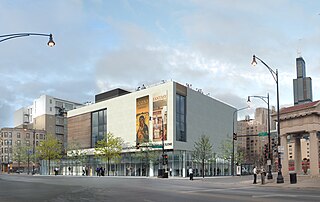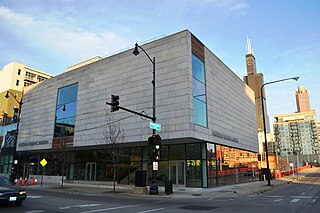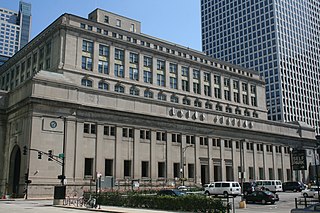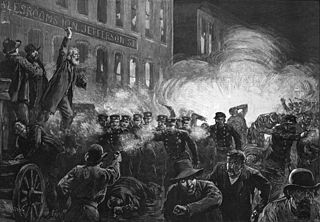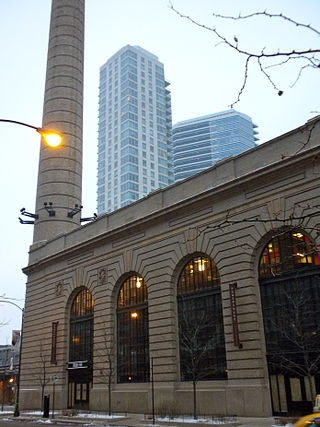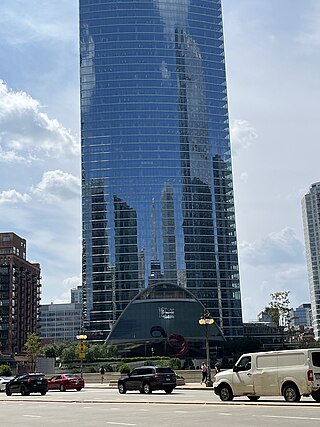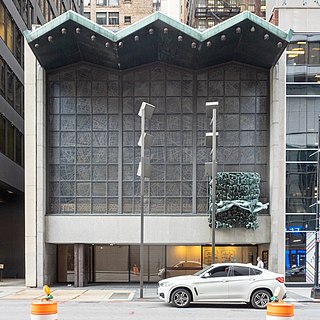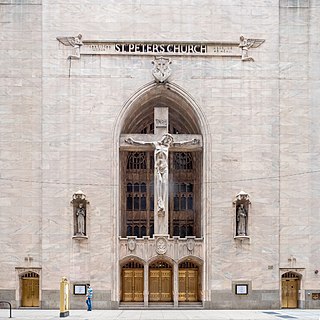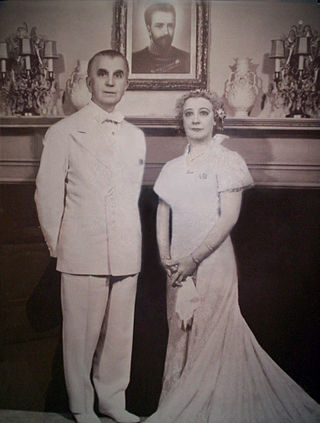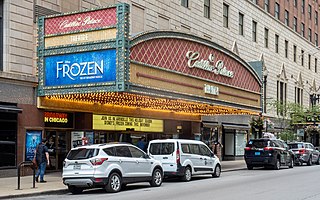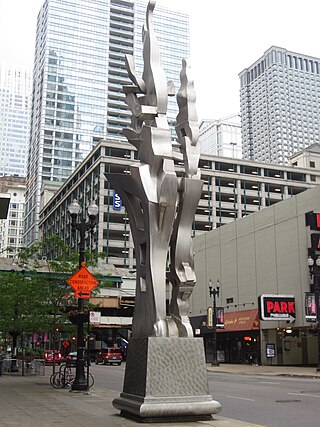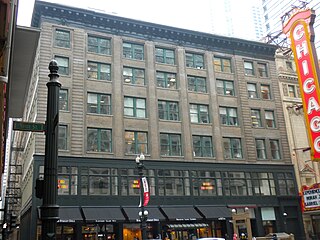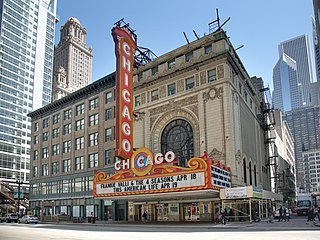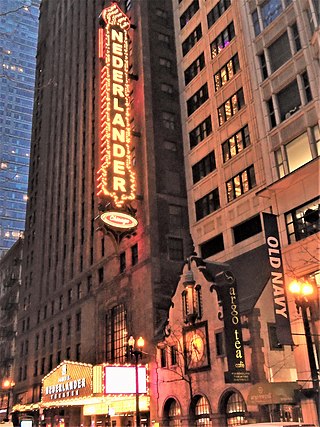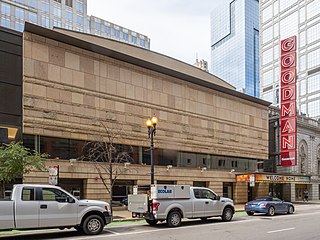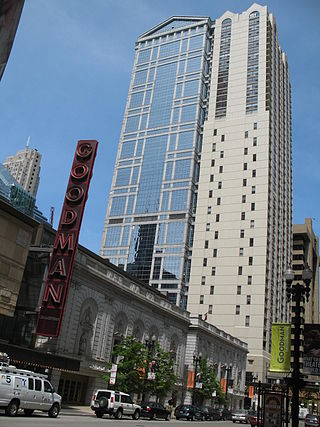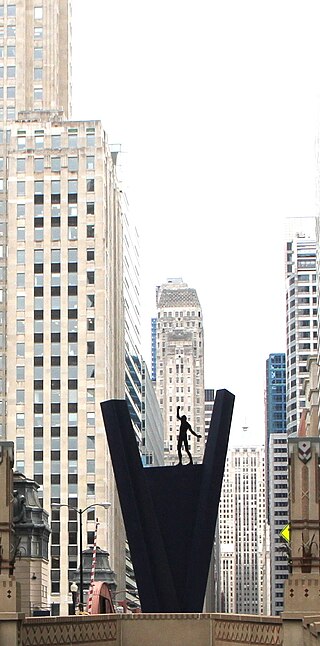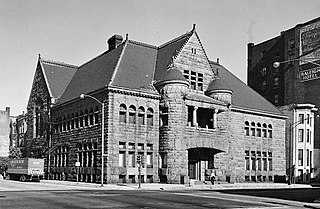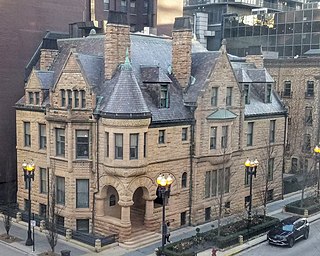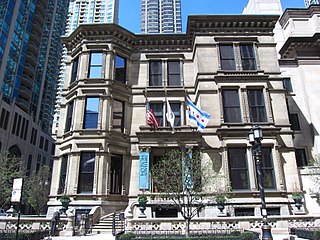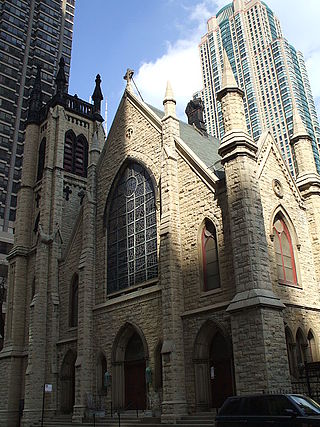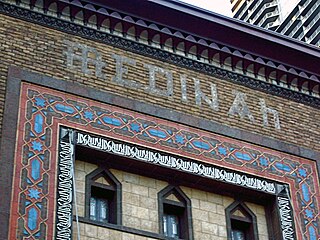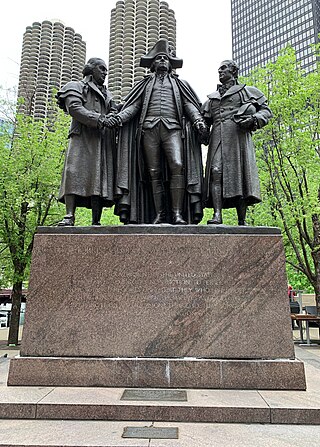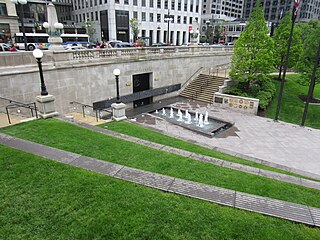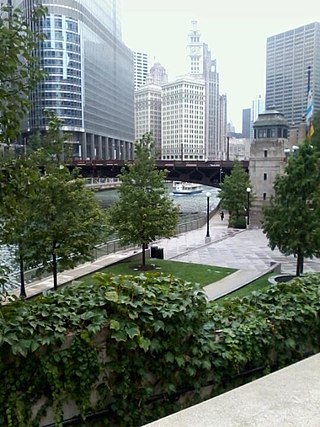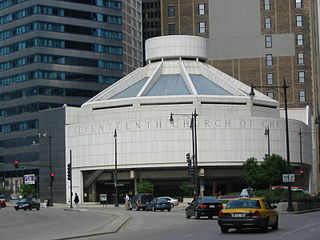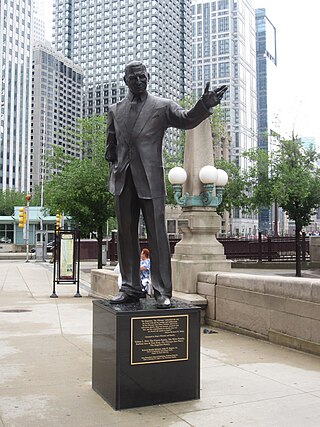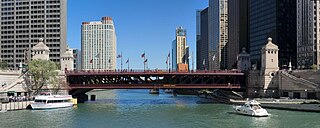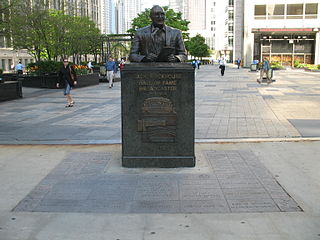Self-guided Sightseeing Tour #2 in West Chicago Township, United States
Legend
Tour Facts
11.7 km
1018 m
Experience West Chicago Township in United States in a whole new way with our free self-guided sightseeing tour. This site not only offers you practical information and insider tips, but also a rich variety of activities and sights you shouldn't miss. Whether you love art and culture, want to explore historical sites or simply want to experience the vibrant atmosphere of a lively city - you'll find everything you need for your personal adventure here.
Individual Sights in West Chicago TownshipSight 1: Greektown
Greektown is a social and dining district, located on the Near West Side of Chicago. Today, Greektown consists mostly of restaurants and businesses, although a cultural museum and an annual parade and festival still remain in the neighborhood.
Sight 2: National Hellenic Museum
The National Hellenic Museum is the second oldest American institution dedicated to displaying and celebrating the cultural contributions of Greeks and Greek-Americans. Formerly known as the Hellenic Museum and Cultural Center, the National Hellenic Museum is located in Chicago’s Greektown, at the corner of Halsted and Van Buren Streets. The National Hellenic Museum has recently undergone a modernization program that cumulated in the museum moving to its current building in December 2011. The official opening of the NHM took place on December 10th, 2011 and proved to be a marked event within the Greek community of Chicago.
Sight 3: Chicago Union Station
Chicago Union Station is an intercity and commuter rail terminal located in the West Loop neighborhood of the Near West Side of Chicago. Amtrak's flagship station in the Midwest, Union Station is the terminus of eight national long-distance routes and eight regional corridor routes. Six Metra commuter lines also terminate here.
Sight 4: Batcolumn
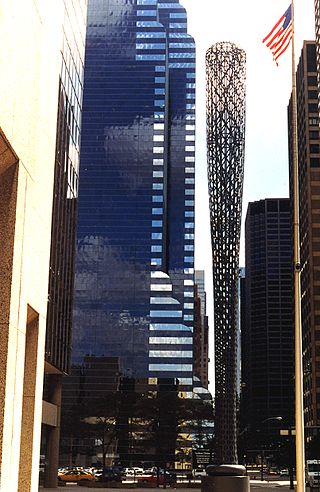
Batcolumn is a 101-foot-tall (31 m) outdoor sculpture in Chicago. Designed by Claes Oldenburg, it takes the shape of a baseball bat standing on its knob. It consists of gray-painted COR-TEN steel arranged into an open latticework structure.
Sight 5: Haymarket Memorial
The Haymarket affair, also known as the Haymarket massacre, the Haymarket riot, the Haymarket Square riot, or the Haymarket Incident, was the aftermath of a bombing that took place at a labor demonstration on May 4, 1886, at Haymarket Square in Chicago, Illinois, United States. The rally began peacefully in support of workers striking for an eight-hour work day, the day after the events at the McCormick Harvesting Machine Company, during which one person was killed and many workers injured. An unknown person threw a dynamite bomb at the police as they acted to disperse the meeting, and the bomb blast and ensuing retaliatory gunfire by the police caused the deaths of seven police officers and at least four civilians; dozens of others were wounded.
Sight 6: Chicago and North Western Railway Power House
The Chicago and North Western Railway Power House is the historic power house which served the 1911 Chicago and North Western Terminal in Chicago, Illinois. The building was designed by Frost & Granger in 1909; it was mainly designed in the Beaux Arts style but also exhibits elements of the Italian Renaissance Revival style. Construction on the building finished in 1911, the same year the terminal opened. The irregularly shaped building borders Clinton Street, Milwaukee Avenue, Lake Street, and the former Chicago and North Western tracks, which are now used by Metra for its Union Pacific District. The power house was built in cream brick with terra cotta trim, cornices, and ornamentation; the corner of the house at Clinton and Milwaukee features a 227-foot (69 m) brick smokestack. The building contained four rooms, a large engine room and boiler room and a smaller engineer's office and reception room. The Chicago Tribune reported in 1948 that the power house output enough power to serve a city of 15,000 people. The power house ceased to serve the station in the 1960s, but when the terminal was demolished and replaced by Ogilvie Transportation Center in 1984, the power house survived. It is one of two remaining railroad power houses in Chicago and the only remaining power house for the Chicago and North Western.
Wikipedia: Chicago and North Western Railway Power House (EN)
Sight 7: Constellation
Constellation is a sculpture by Santiago Calatrava, installed along the Chicago River in Chicago, Illinois. The 29-foot-tall red sculpture was privately funded.
Sight 8: Civic Opera House
The Civic Opera House, also called Lyric Opera House is an opera house located at 20 North Wacker Drive in Chicago. The Civic's main performance space, named for Ardis Krainik, seats 3,563, making it the second-largest opera auditorium in North America, after the Metropolitan Opera House. Built for the Chicago Civic Opera, it has been home to the Lyric Opera of Chicago since 1954 and the Joffrey Ballet since 2021. It is part of a complex with a 45-story office tower and two 22-story wings, known as the Civic Opera Building that opened November 4, 1929 and features Art Deco details.
Sight 9: Loop Synagogue
The Chicago Loop Synagogue is an Orthodox Jewish synagogue, located at 16 South Clark Street, in the Loop precinct of Chicago, Illinois, in the United States. Completed in 1958, the synagogue is renowned for a stained glass artwork by Abraham Rattner.
Sight 10: St. Peter's Church
St. Peter's in the Loop, on Madison between LaSalle and Clark in Chicago, Illinois, was built in 1953. It was designed by architects Vitzthum & Burns.
Sight 11: I Am Temple
The I AM Movement, also referred to as the I AM Temple, is the original ascended master teachings neo-Theosophical religious movement founded in the early 1930s by Guy Ballard (1878–1939) and his wife Edna Anne Wheeler Ballard (1886–1971) in Chicago, Illinois. It is an offshoot of theosophy and a major precursor of several New Age religions including the Church Universal and Triumphant.
Sight 12: Cadillac Palace Theatre
The Cadillac Palace Theatre is operated by Broadway In Chicago, a Nederlander company and seats 2,344. It is located at 151 West Randolph Street in the Chicago Loop area. Opened in 1926 and designed largely in the French Baroque style, it is connected to the historic Eitel Brothers' Bismarck Hotel, and was for a time known as the, Bismarck Theatre. Cadillac has held the naming rights since 1999.
Sight 13: We Will Chicago
We Will is an outdoor 2005 welded stainless steel sculpture by Richard Hunt, installed in Chicago, in the U.S. state of Illinois.
Sight 14: Page Brothers Building
The north facade facing Lake Street of the Page Brothers Building, 177-91 North State Street in the Loop community area of Chicago in Cook County, Illinois, United States, features the city's last remaining cast iron front. Although this example was built after the 1871 Great Chicago Fire, iron facades were a common construction technique before the fire, and many of the iron fronts melted due to the intense heat. The original 5 story structure was built by John Mills Van Osdel, a prominent post-Fire architect known for buildings in the Jewelers Row District and Old Main at the University of Arkansas. In 1902, the west facade facing State Street was remodeled and another floor was added, reflecting the reorientation of commercial activity from Lake to State Street.
Sight 15: Chicago Theatre
The Chicago Theatre, originally known as the Balaban and Katz Chicago Theatre, is a landmark theater located on North State Street in the Loop area of Chicago, Illinois. Built in 1921, the Chicago Theatre was the flagship for the Balaban and Katz (B&K) group of theaters run by A. J. Balaban, his brother Barney Balaban and partner Sam Katz. Along with the other B&K theaters, from 1925 to 1945 the Chicago Theatre was a dominant movie theater enterprise. Currently, Madison Square Garden, Inc. owns and operates the Chicago Theatre as a 3600 seat performing arts venue for stage plays, magic shows, comedy, speeches, sporting events and popular music concerts.
Sight 16: James M. Nederlander Theatre
The James M. Nederlander Theatre is a theater located at 24 West Randolph Street in the Loop area of downtown Chicago, Illinois. Previously known as the Oriental Theatre, it opened in 1926 as a deluxe movie palace and vaudeville venue. Today the Nederlander presents live Broadway theater and is operated by Broadway In Chicago, currently seating 2,253.
Sight 17: Albert Ivar Goodman Theatre
Goodman Theatre is a professional theater company located in Chicago's Loop. A major part of the Chicago theatre scene, it is the city's oldest currently active nonprofit theater organization. Part of its present theater complex occupies the landmark Harris and Selwyn Theaters property.
Sight 18: Owen Bruner Goodman Theatre
The Harris and Selwyn Theaters are twin theatres located in the Loop community area of Chicago, Illinois. They were built by Sam H. Harris and Archie and Edgar Selwyn. They were designated a Chicago Landmark on March 31, 1983. They have been redesigned by the Goodman Theatre, which is located in them.
Sight 19: Monument With Standing Beast
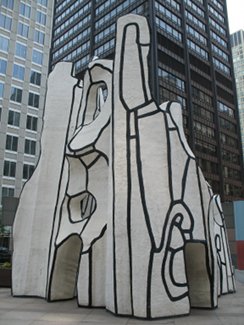
Monument with Standing Beast is a sculpture by Jean Dubuffet previously located in front of the Helmut Jahn designed James R. Thompson Center in the Loop community area of Chicago, Illinois. Its location was across the street from Chicago City Hall to the South and diagonal across the street from the Daley Center to the southeast. It is a 29-foot (8.8 m) white fiberglass work of art. The piece is a 10-ton or 20,000 pounds (9,100 kg) work. It was unveiled on November 28, 1984. It was dismantled in the spring of 2024 and was bound for a state warehouse.
Sight 20: Crossing
Crossing is a sculpture by Hubertus Von Der Goltz, installed on La Salle Street in Chicago, Illinois. The 25-foot-tall steel artwork has a statue of a man on top of a V-shaped structure. Installed in 1998, it is the only extant permanent work from the 17th annual International Sculpture Conference hosted by Chicago.
Sight 21: Former Chicago Historical Society Building
The Former Chicago Historical Society Building is a historic landmark located at 632 N. Dearborn Street on the northwest corner of Dearborn and Ontario streets near downtown Chicago. Built in 1892, the granite-clad building is a prime example of Henry Ives Cobb's Richardsonian Romanesque architecture. Henry Cobb designed this home for Walter Loomis Newberry, founder of the Newberry Library in Chicago. The building was designated a Chicago Landmark in 1997. It was listed on the National Register of Historic Places in 1978, under the name, Old Chicago Historical Society Building.
Sight 22: Ransom R. Cable House
The Cable House is a Richardsonian Romanesque-style house near Michigan Avenue at 25 E. Erie St. in Chicago, Illinois, United States. The house was built in 1886 by Cobb and Frost for socialite Ransom R. Cable. It was designated a Chicago Landmark on October 2, 1991.
Sight 23: Richard H. Driehaus Museum
The Richard H. Driehaus Museum is a museum located at 40 East Erie Street on the Near North Side in Chicago, Illinois, near the Magnificent Mile. The museum is housed within the historic Samuel M. Nickerson House, the 1883 residence of a wealthy Chicago banker. Although the mansion has been restored, the Driehaus Museum does not re-create the Nickerson period but rather broadly interprets and displays the prevailing design, architecture, and decorating tastes of Gilded Age America and the Art Nouveau era in permanent and special exhibitions.
Sight 24: St. James Episcopal Cathedral
St. James Cathedral is the mother church of the Episcopal Church in the United States of America Diocese of Chicago in Chicago, Illinois. The cathedral stands at the corner of Huron and Wabash streets.
Sight 25: Nickerson House
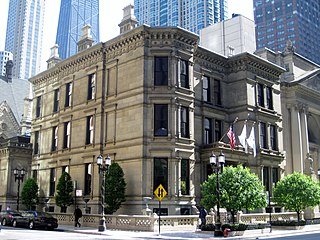
The Samuel M. Nickerson House, located at 40 East Erie Street in the Near North Side neighborhood of Chicago, Illinois, is a Chicago Landmark. It was designed by Edward J. Burling of the firm of Burling and Whitehouse and built for Samuel and Mathilda Nickerson in 1883. Samuel M. Nickerson was a prominent figure in the rising national banking industry, who was said to have owned at one point more national bank stock than anyone else in the United States.
Sight 26: Former Medinah Temple
The Medinah Temple is a large Moorish Revival building in Chicago built by Shriners architects Huehl & Schmid in 1912.
Sight 27: Heald Square Monument
The Heald Square Monument is a bronze sculpture group by Lorado Taft in Heald Square, Chicago, Illinois. It depicts General George Washington and the two principal financiers of the American Revolution: Robert Morris and Haym Salomon. Following Taft's 1936 death, the sculpture was completed by his associates Leonard Crunelle, Nellie Walker and Fred Torrey.
Sight 28: Vietnam Veterans Memorial
The Vietnam Veterans Memorial is a war memorial in Chicago, in the U.S. state of Illinois, dedicated on November 11, 2005.
Sight 29: Chicago Riverwalk
The Chicago Riverwalk is a multi-use public open space located on the south bank of the main branch of the Chicago River in Chicago, extending from Lake Michigan and the Outer Drive Bridge westward to the Wolf Point area and Lake Street. The Chicago Riverwalk contains restaurants, bars, cafes, small parks, boat and kayak rentals, a Vietnam War memorial, and other amenities.
Sight 30: Seventeenth Church of Christ Scientist
Seventeenth Church of Christ, Scientist, built in 1968, is a modern style Christian Science church building located in The Loop at 55 East Wacker Drive, in Chicago, Illinois in the United States. It was designed by noted Chicago-based architect Harry Weese, whose most famous work is the Washington Metro but who is remembered best as the architect who "shaped Chicago’s skyline and the way the city thought about everything from the lakefront to its treasure-trove of historical buildings."
Sight 31: Irv Kupcinet
An outdoor 2006 bronze statue of Irv Kupcinet by Preston Jackson is installed in Chicago, in the U.S. state of Illinois. It is located on the sidewalk of Wacker Drive near its intersection with Wabash Avenue, just steps from the Chicago Riverwalk. The left hand of the sculpture gestures in the direction of Tribune Tower across the Chicago River.
Sight 32: McCormick Bridgehouse & Chicago River Museum
The DuSable Bridge is a bascule bridge that carries Michigan Avenue across the main stem of the Chicago River in downtown Chicago, Illinois, United States. The bridge was proposed in the early 20th century as part of a plan to link Grant Park (downtown) and Lincoln Park (uptown) with a grand boulevard. Construction of the bridge started in 1918, it opened to traffic in 1920, and decorative work was completed in 1928. The bridge provides passage for vehicles and pedestrians on two levels. An example of a fixed trunnion bascule bridge, it may be raised to allow tall ships and boats to pass underneath. The bridge is included in the Michigan–Wacker Historic District and has been designated as a Chicago Landmark.
Sight 33: Jack Brickhouse
An outdoor sculpture of Jack Brickhouse is installed along Michigan Avenue, near the Chicago River bridge, in Chicago, Illinois. The bust was originally dedicated in 2000, and renovated in 2009.
Sight 34: Chicago Rising from the Lake
Chicago Rising from the Lake (1954) is a bronze sculpture by Milton Horn. The sculpture shows a woman, rising from waters of Lake Michigan, with flames, animals and wheat. It represents Chicago's rebirth after the Great Chicago Fire, and subsequent rise to become a leader in transportation, stockyards and commodities.
Sight 35: Ogden Plaza
William Ogden Plaza Park is a 1.38-acre (0.56 ha) park in Streeterville, Chicago, in the U.S. state of Illinois. The park is named after William B. Ogden.
Share
How likely are you to recommend us?
Disclaimer Please be aware of your surroundings and do not enter private property. We are not liable for any damages that occur during the tours.
GPX-Download For navigation apps and GPS devices you can download the tour as a GPX file.
